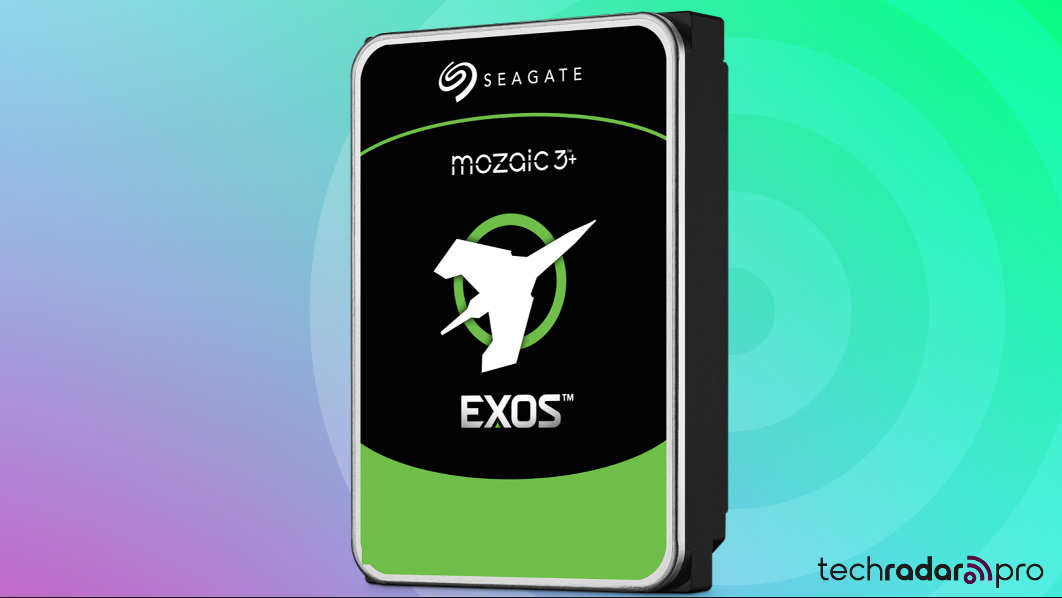Exclusive: Seagate explains why it didn’t sell a 60TB SSD in 2016 — and when it plans to finally release a 60TB HDD to the world
You see, it’s all about priorities and expectations

Seagate has been firing on all cylinders in January 2024 as it launched the world’s first 30 TB hard disk drive (and the largest hard drive ever produced), the Exos Mozaic 3+, with the promise of much more to come including a 50 TB HDD (more on that later).
Many of you may not know but it won’t be Seagate’s first 50 TB+ storage device (ed: Check out our list of the best hard drives right now).
Back in August 2016, the storage company demoed a 60TB SSD at Flash Memory Summit, yep, that’s nearly eight years ago, one which would have easily got a slot in our best SSD guide). The unnamed drive had a 3.5-inch form factor, the same as hard disk drives, a SAS (Serial Attached SCSI) interface and featured ultra-dense NAND technology rom Micron, reaching what was then a new low in power efficiency (4TB per watt or 15W to power the whole device).
All go
Seagate went quiet on the drive ever since and for the first time ever, I’ve been able to get an official statement from the company on what could have been a game changer back in the days.
A Seagate spokesperson told me "With time and given constraints, all companies have to make decisions regarding their priorities. For example, we've seen a lot of roadmap reprioritizations during the latest economic downturn. It made sense for us to reevaluate our priorities because the environment was very dynamic at the time, including some industry consolidation that forced reevaluations across the board. So, we focused on where we have our greatest advantage. Our identity has always been a leader in hard drive storage technology. Keeping in mind that SSD storage continues to be more expensive than hard drives at the ratio of about 5:1 per TB, our decision to focus on areal density innovation for hard drives makes good business sense to us.”
So there you go: it was all down to playing on your strengths rather than running after technology where you don’t have a unique selling point (Seagate used Micron NAND back then). The acquisition of Sandisk by Western Digital - announced in October 2015, just 10 months earlier - might have been the catalyst for that decision. Sandisk brought NAND manufacturing capabilities to Western Digital, Seagate’s HDD archrival, allowing for vertical integration and economies of scale, something that Seagate couldn’t match.
Vertical integration is the key here. During a conversation I had with BS Teh, the company’s Executive Vice President and Chief Commercial Officer ahead of the launch of the Exos Mozaic 3+, it was apparent that controlling the entire hardware stack was instrumental to Seagate gaining a lead in the capacity race. The company is not using Resonac, the world leader in hard drive platters, relying instead on its own home grown technology.
Sign up to the TechRadar Pro newsletter to get all the top news, opinion, features and guidance your business needs to succeed!
That may explain why Seagate has delayed the launch of its 50TB hard disk drive to a 24-month window (2027 to 2028), instead of the original schedule (2026). What comes next? Well, Seagate’s BS Teh has confirmed that hard drive platters with capacities bigger than 5TB will come afterwards, which may mean 6TB (or 60TB HDD, if using 10 platters) in 2029. For that to happen would require a massive improvement in the actual areal density, as measured in Tb per square inch; the current record holder is Seagate’s own 30TB drive at 1.742 Tb/si.
More from TechRadar Pro
- We've shortlisted the best external HDD
- Here's a list of the best cloud storage around today
- These are the best portable SSD on offer

Désiré has been musing and writing about technology during a career spanning four decades. He dabbled in website builders and web hosting when DHTML and frames were in vogue and started narrating about the impact of technology on society just before the start of the Y2K hysteria at the turn of the last millennium.